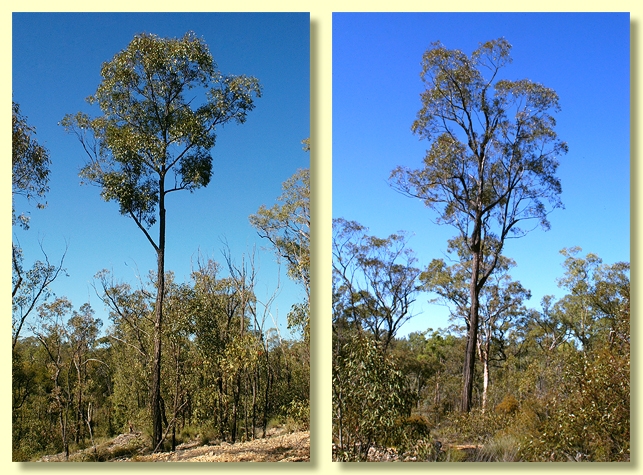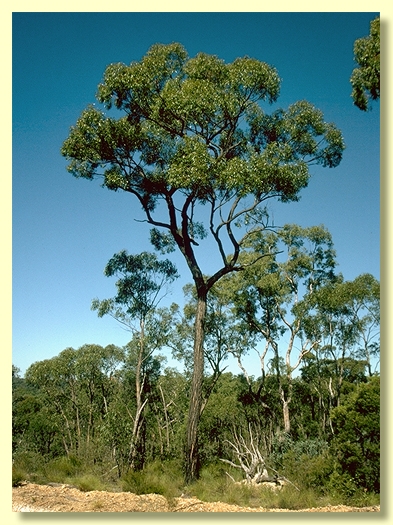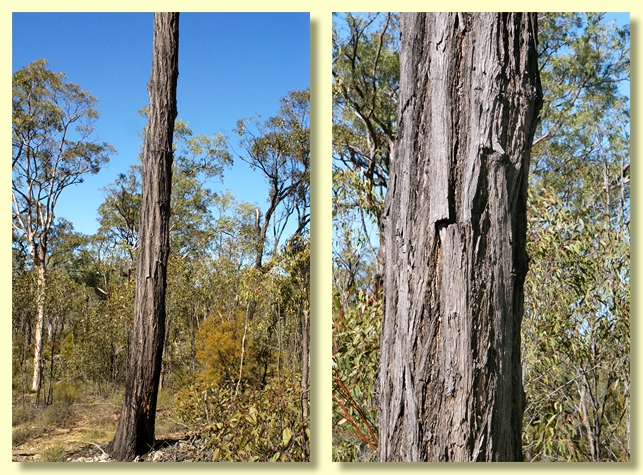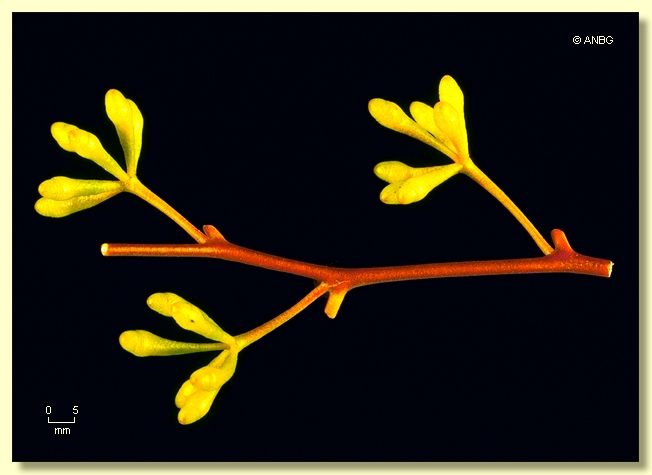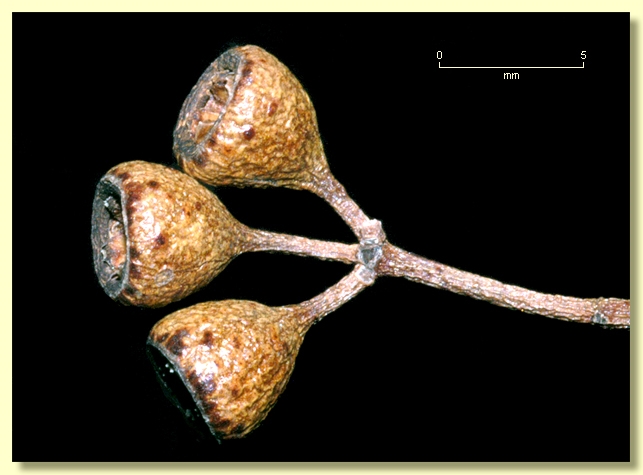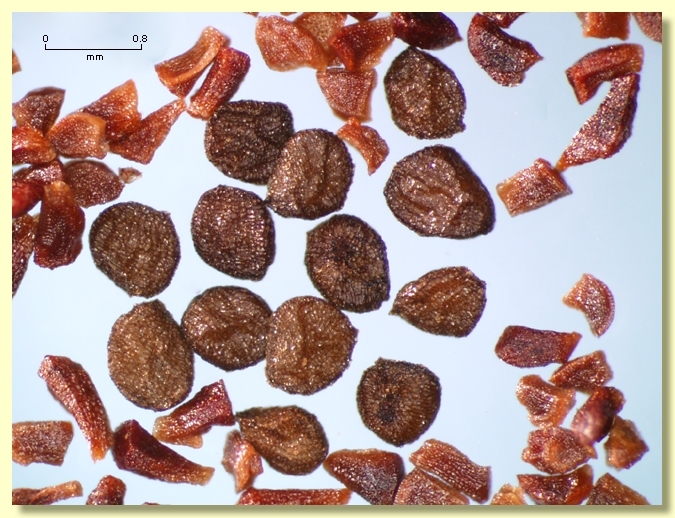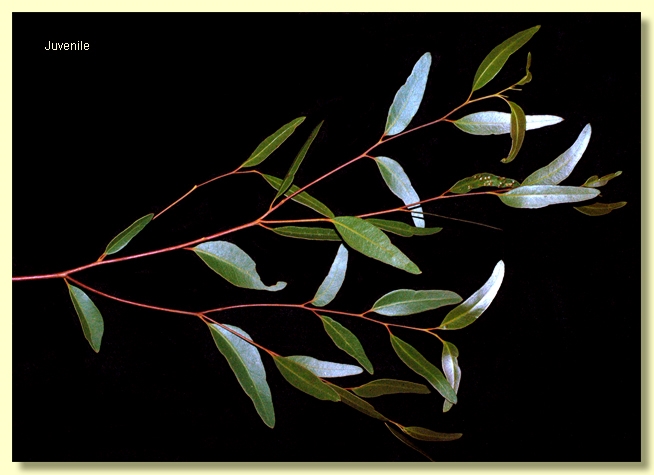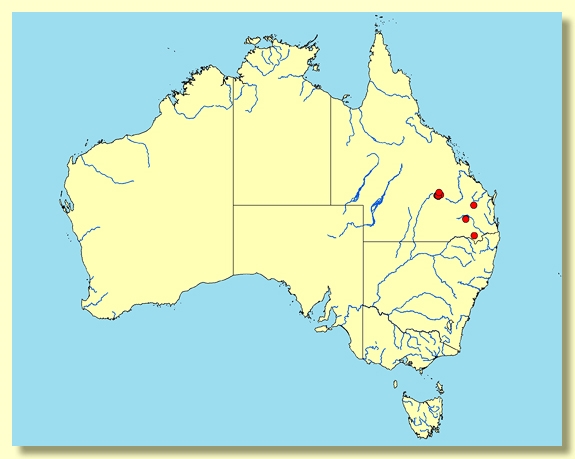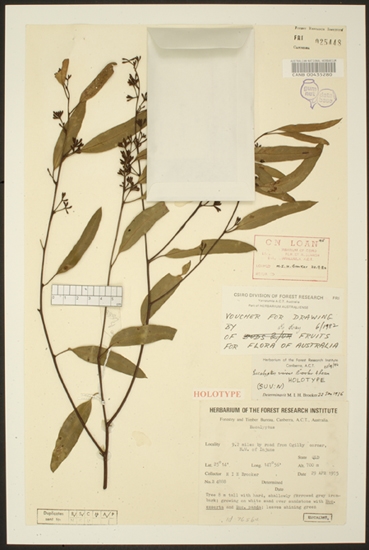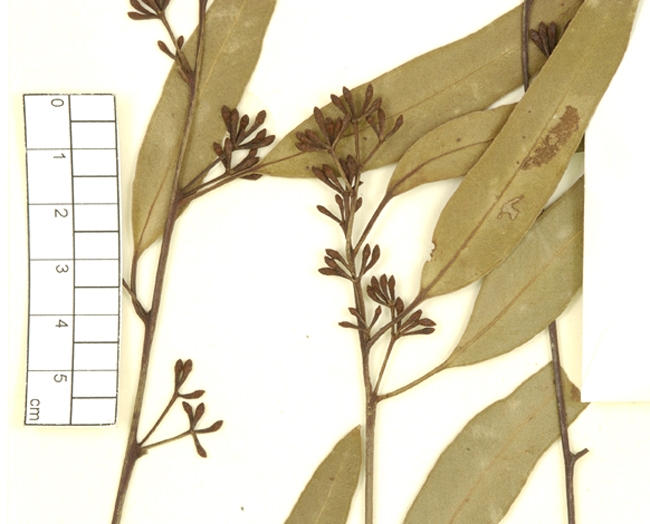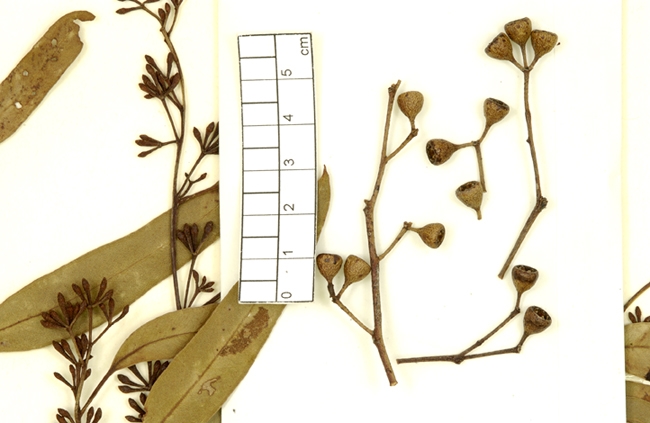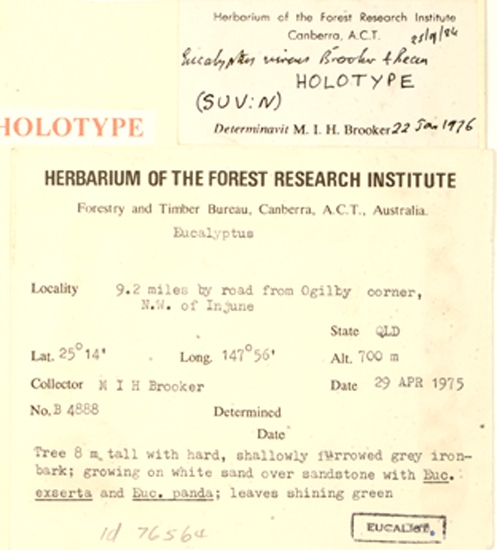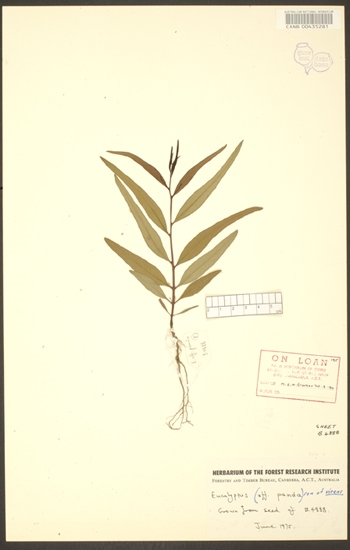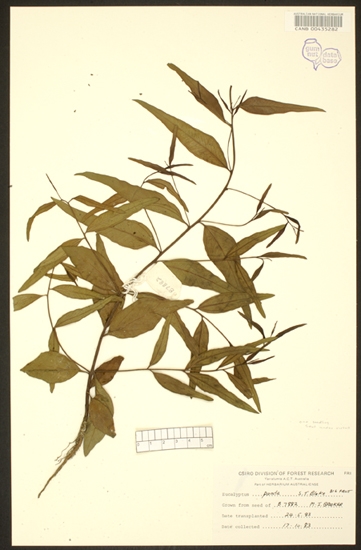Eucalyptus | Symphyomyrtus | Adnataria | Terminales | Rhodoxylon | Concolores
Euclid - Online edition
Eucalyptus virens
Tree to 25 m tall. Forming a lignotuber.
Ironbark to the small branches, grey or black, often somewhat soft and flaky. Oil glands sometimes present in the pith of the branchlets.
Juvenile growth (coppice or field seedlings to 50 cm): stem square or rounded in cross-section; juvenile leaves always petiolate, opposite only at the first node then becoming alternate, lanceolate, 4–7(10.5) cm long, 1–1.6 cm wide, very glossy green from the first leaf, same colour as adult leaves.
Adult leaves alternate, petiole 1–2.2 cm long; blade narrowly lanceolate, 5.5–11 cm long, 0.9–2(2.4) cm wide, base tapering to petiole, concolorous, glossy, green, side-veins usually less than 45° to midrib, densely to very densely reticulate, intramarginal vein parallel to and remote from margin, oil glands intersectional or obscure.
Inflorescence terminal compound and sometimes axillary single umbels, peduncles 0.6–1.5 cm long, buds 7 per umbel, pedicels 0.2–0.5 cm long. Mature buds ovoid, 0.5–0.6 cm long, 0.4–0.5 cm wide, scar present, operculum conical to rounded, stamens inflexed, with outer staminodes, anthers adnate, positioned obliquely at filament tip, cuboid, dehiscing by terminal pores, style long, stigma pin-head shaped, locules 4 or 5(6), the placentae each with 4 vertical ovule rows. Flowers white.
Fruit on pedicels 0.2–0.6 cm long, hemispherical, 0.4–0.6 cm long, 0.4–0.7 cm wide, disc descending, valves 4 or 5(6), at rim level or enclosed.
Seeds brown, 1–1.5 mm long, flattened-ovoid, dorsal surface shallowly reticulate, hilum ventral.
Cultivated seedlings (measured at ca node 10): cotyledons reniform to oblong; stems square in cross-section; leaves always petiolate, opposite for 3–5 nodes then alternate, narrowly lanceolate, 6–9 cm long, 1–2.5 cm wide, base tapering, margin entire, apex pointed, green.
Flowering has been recorded in February.
A small to medium-sized ironbark tree endemic to south-east Queensland, known only from four separate localities, near Mt Moffatt in the Carnarvon area, the Brovinia area south of Mundubbera, the Tara area west of Dalby and the Coolmunda Dam area east of Inglewood. It is characterised by its small, highly glossy, green adult leaves, small ovoid buds, hemispherical fruit and narrowly lanceolate juvenile leaves.
Within its subgroup, i.e. subseries Concolores, E. virens is closest to E. panda, E. beyeri and E. sicilifolia. All four species have relatively small buds and fruit and linear to narrowly lanceolate juvenile leaves. E. beyeri and E. panda are easily separated by having dull green adult leaves (very glossy green in E. virens). E. sicilifolia differs only slightly by having barrel-shaped fruit (hemispherical in E. virens).
It may also be closely related to E. suffulgens and differs marginally by having slightly smaller hemispherical to obconical fruit (0.4–0.7 cm in E. virens and barrel-shaped and 0.6–1 cm in E. suffulgens). E. fusiformis, E. tetrapleura, E. corynodes and E. caleyi, other members of the subseries Concolores, have dull adult leaves (highly glossy in E. virens ). E. dura and E. melanoleuca differ by having larger broadly lanceolate to ovate juvenile leaves (narrowly lanceolate and 1–2.5 cm wide for E. virens but ovate and 2.5–4.5 cm for E. melanoleuca and broadly lanceolate to ovate and 3–6 cm for E. dura).
All the species in the subseries Discolores, i.e. E. paniculata, E. decolor, E. placita and E. sp. Dorsiventralis, differ by having distinctly discolorous adult leaves (E. virens with concolorous adult leaves). E. sp. Dorsiventralis differs further by having four-sided fruit.
Within its area of occurrence there are other ironbarks which may be confused with E. virens. They are E. beaniana, E. crebra, E. decorticans, E. fibrosa subsp. fibrosa, E. fibrosa subsp. nubila, E. melanophloia, E. rhombica, E. siderophloia and E. tholiformis all of which differ in having buds with stamens all fertile and irregularly flexed.
Eucalyptus sideroxylon differs by having axillary, not terminal, inflorescences, with buds that hold the outer operculum into maturity and both the inner and outer operculum shed together at anthesis (no operculum scar).
Eucalyptus virens is listed as "Vulnerable" under the Australian Government Environment Protection and Biodiversity Conservation Act 1999 (EPBC Act). Further information may be found at this web address:
http://www.environment.gov.au/cgi-bin/sprat/public/sprat.pl
MORE ABOUT IRONBARKS
Eucalyptus virens: from Latin viridis-, green, referring to the bright green adult leaves.

